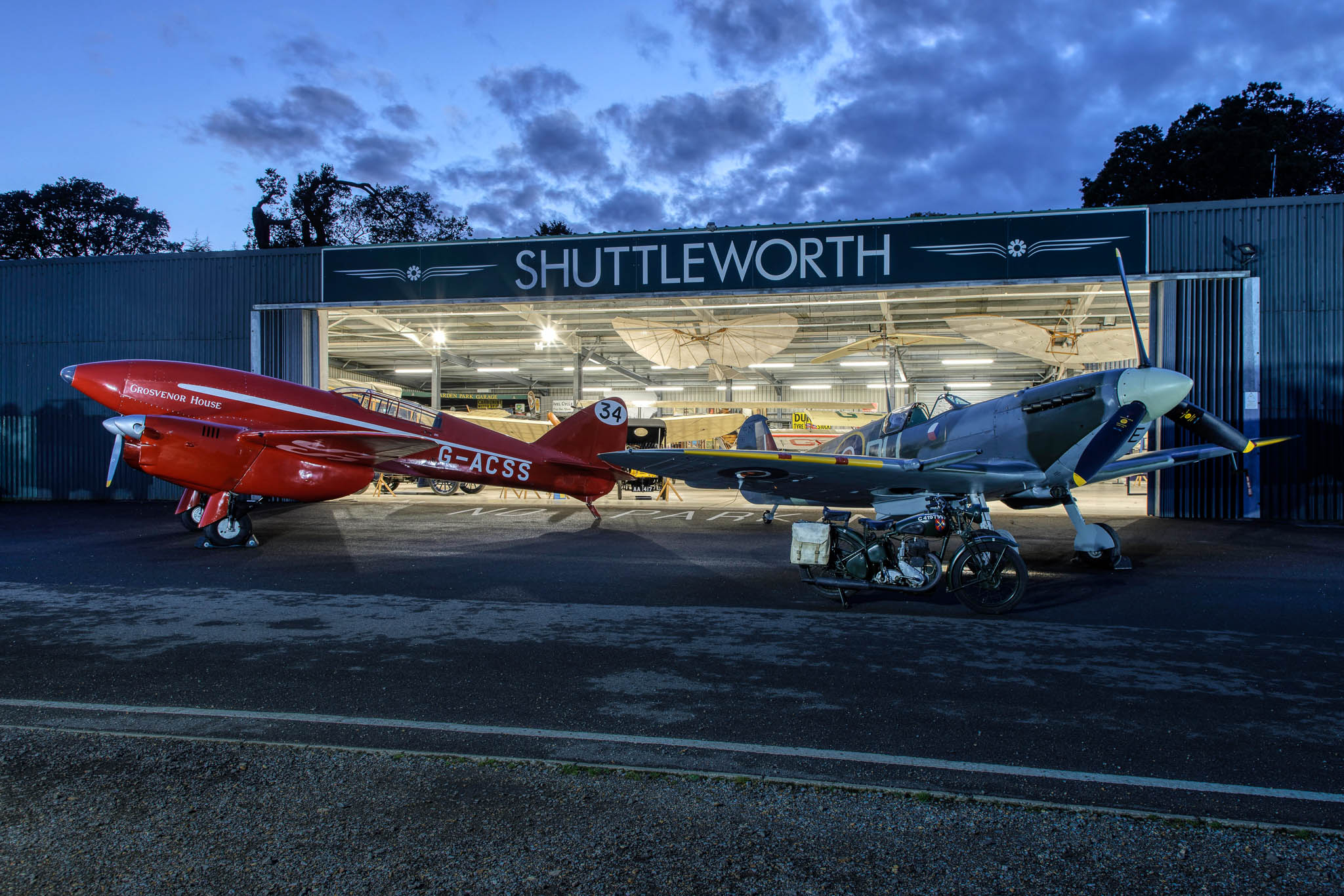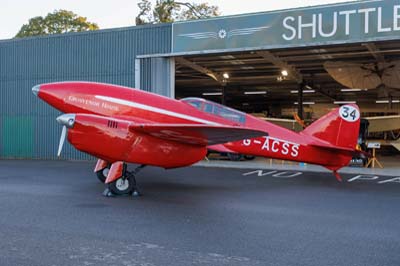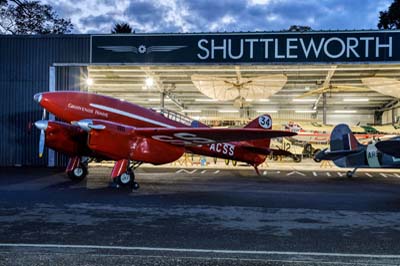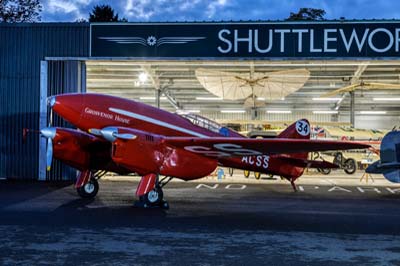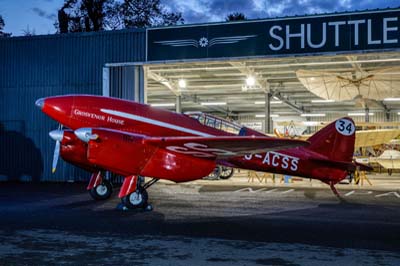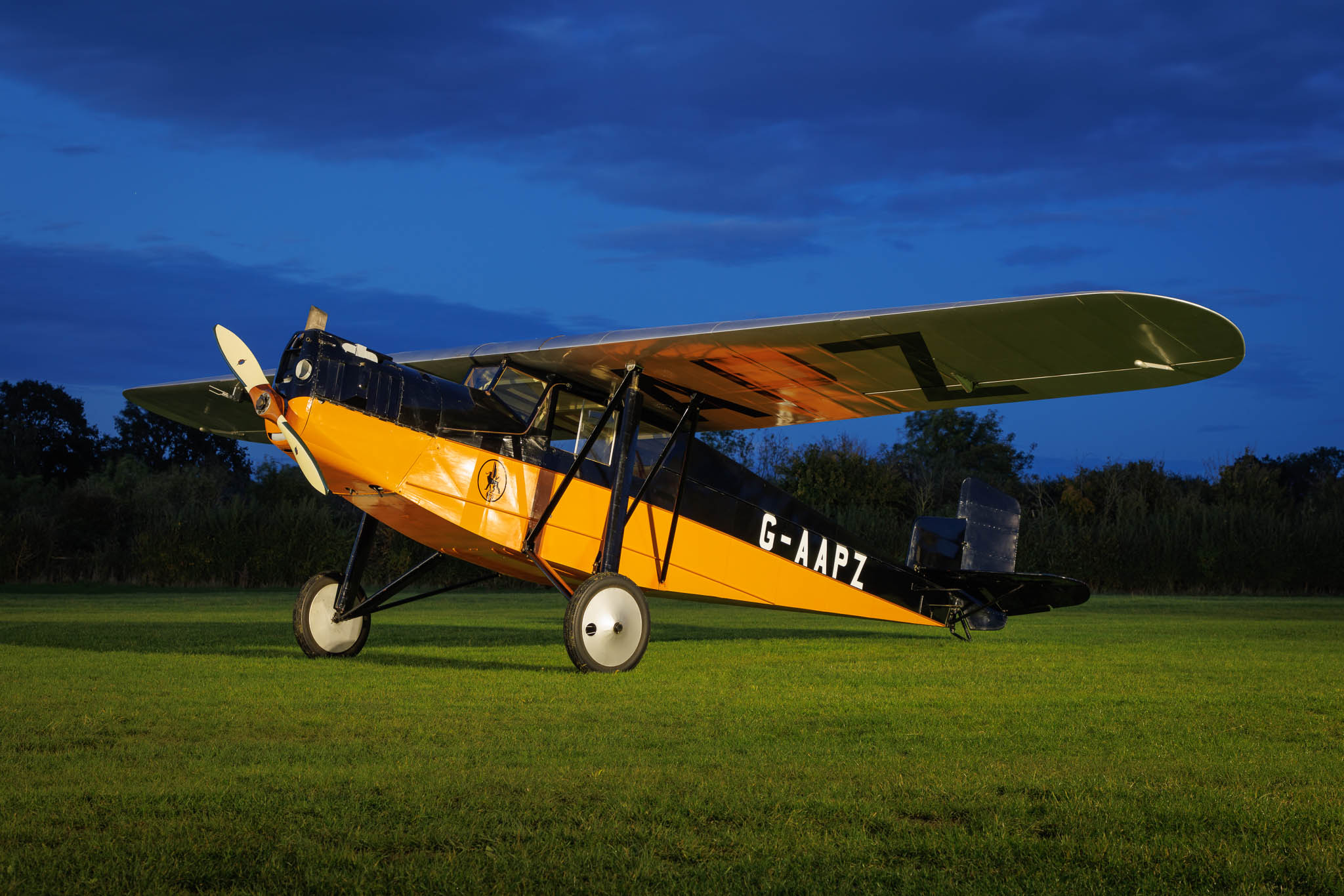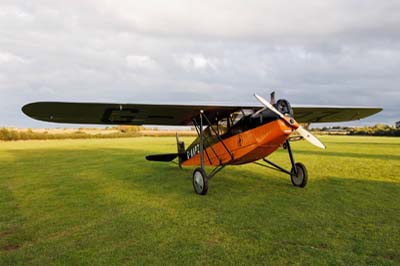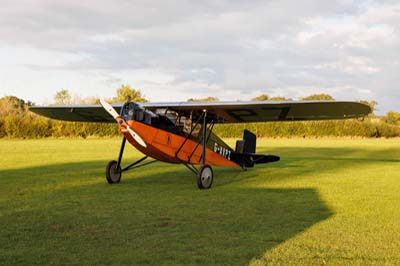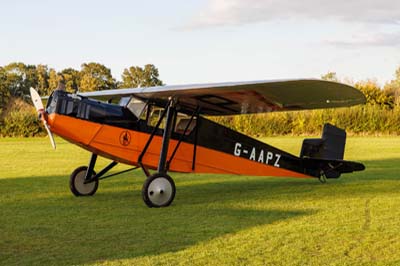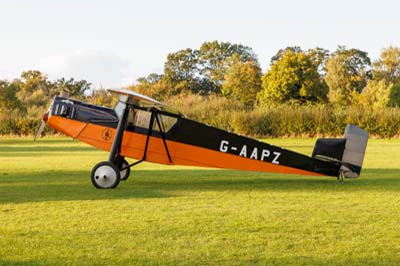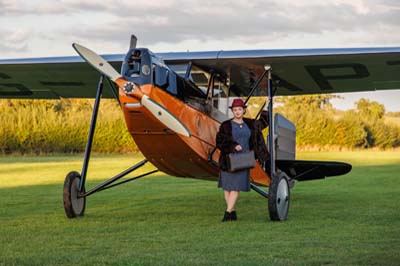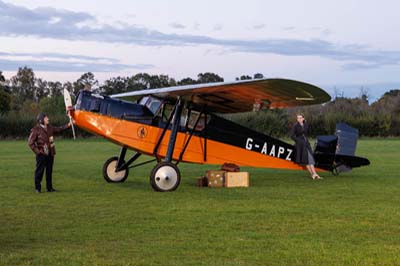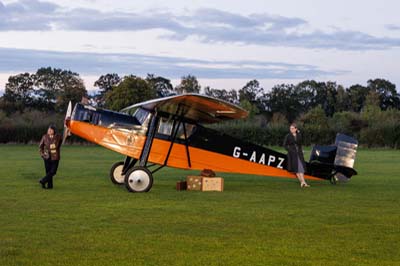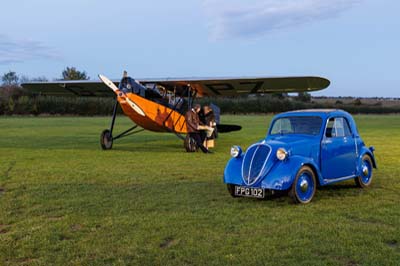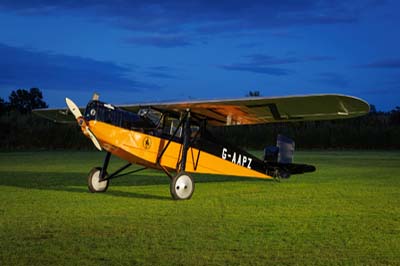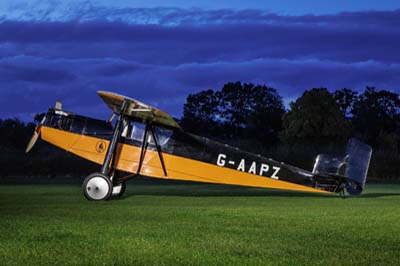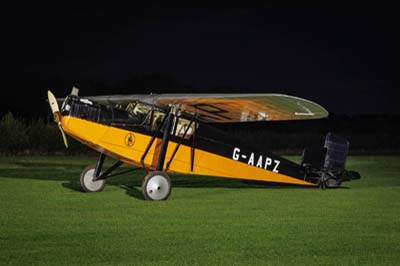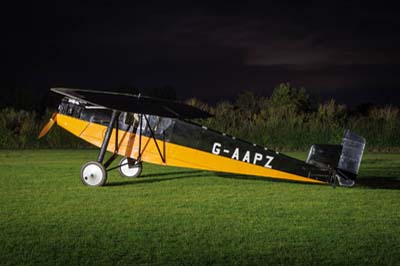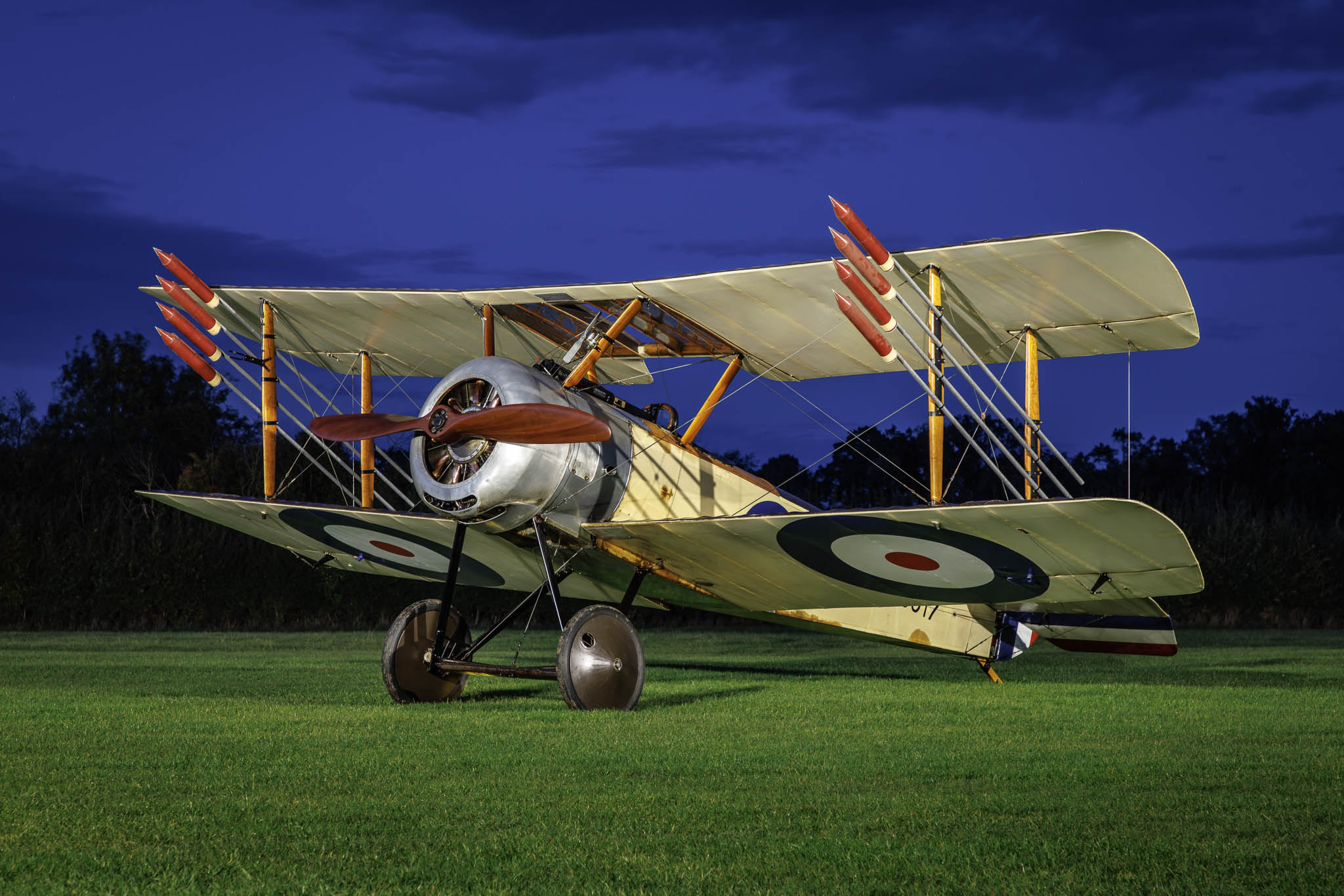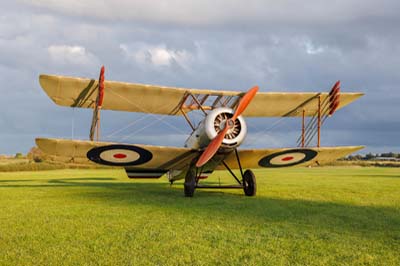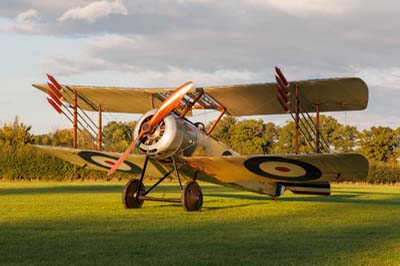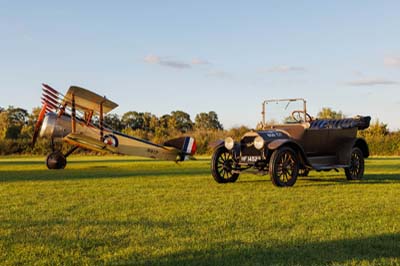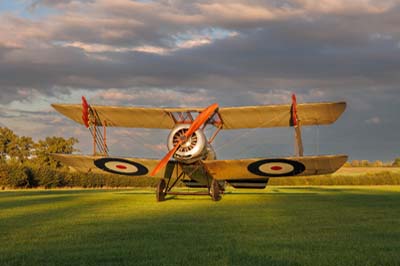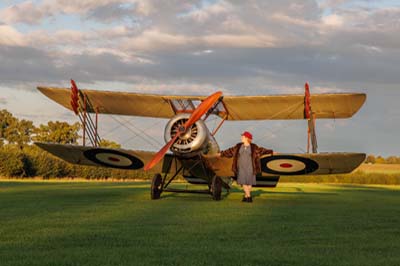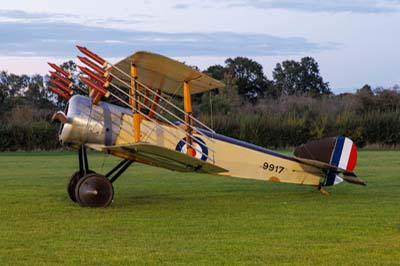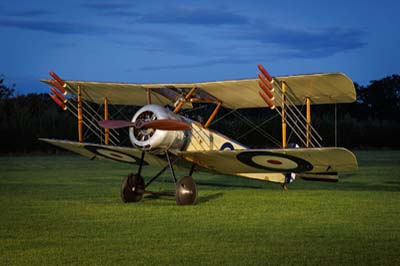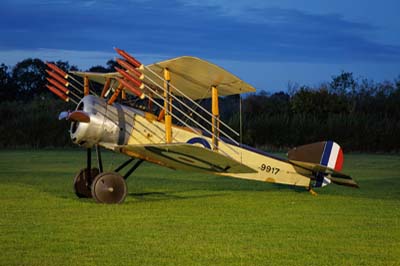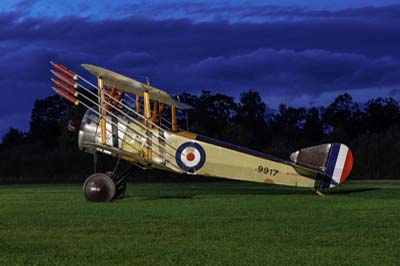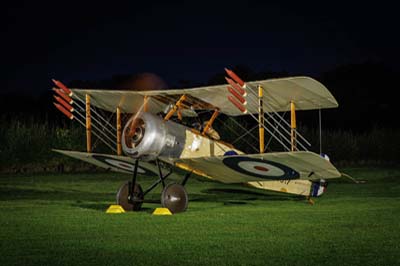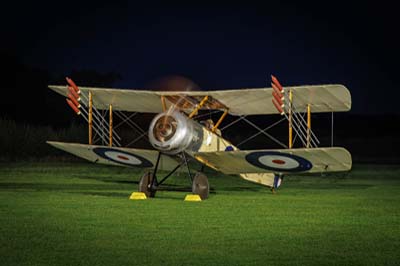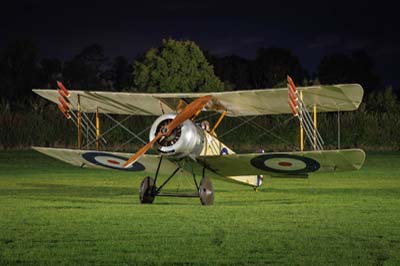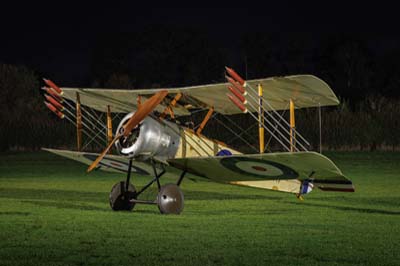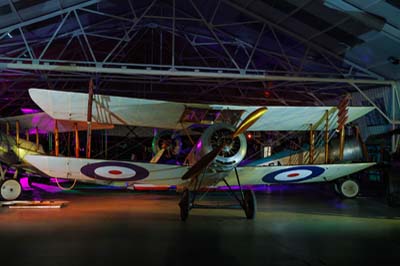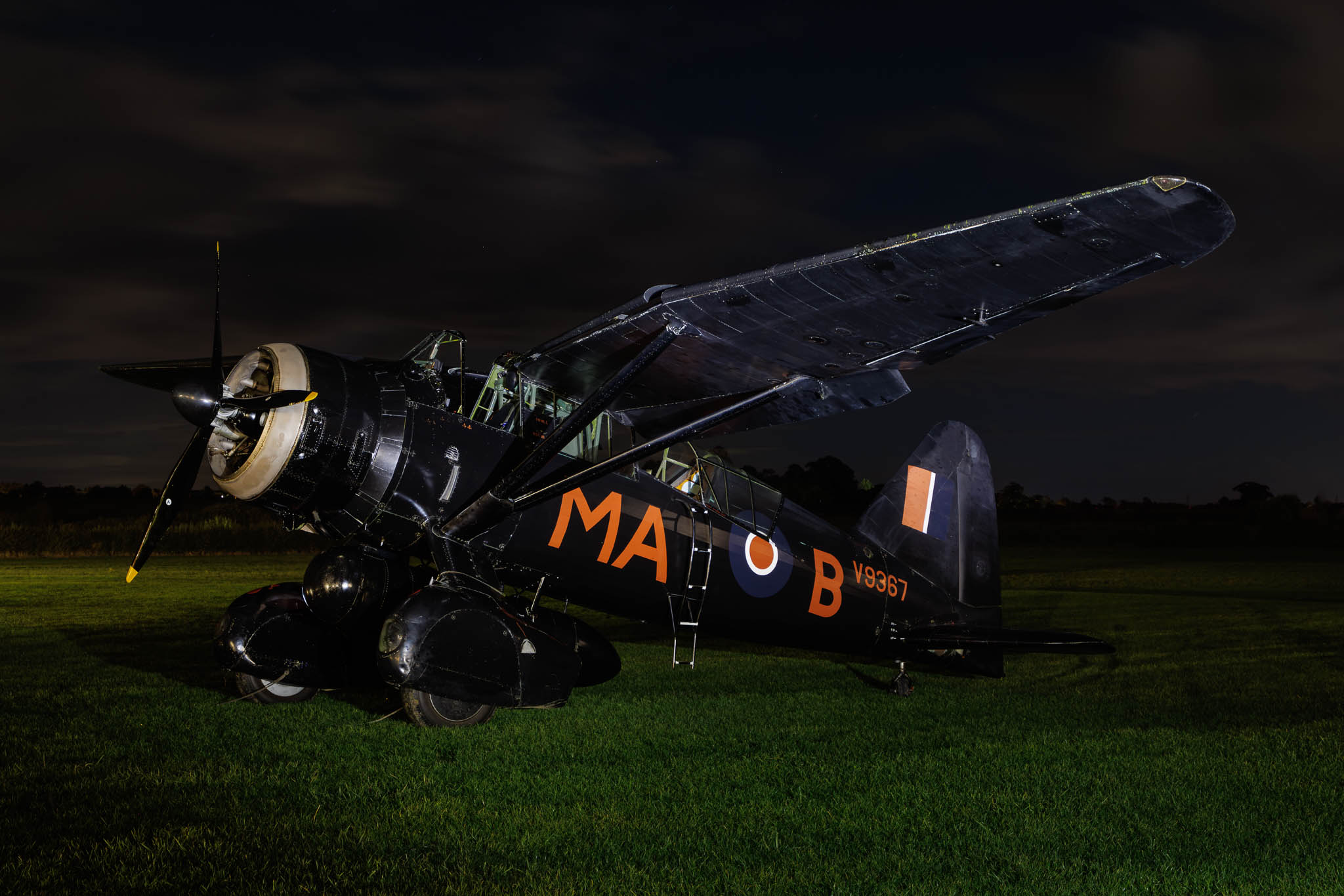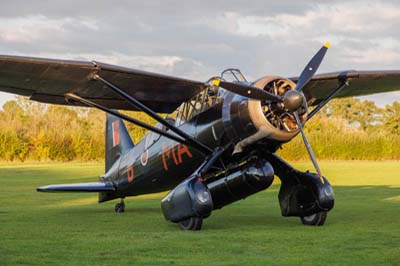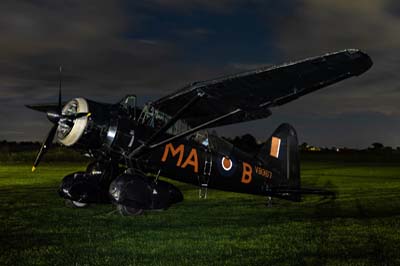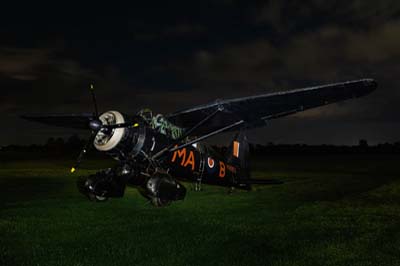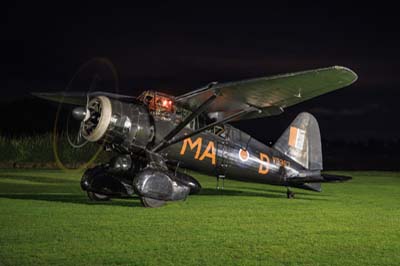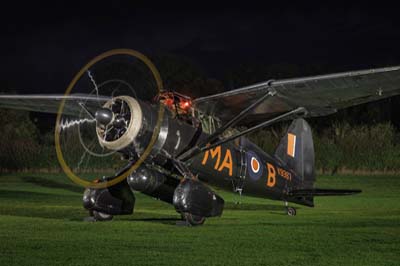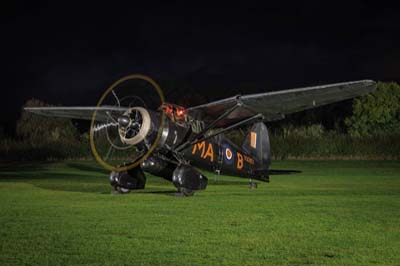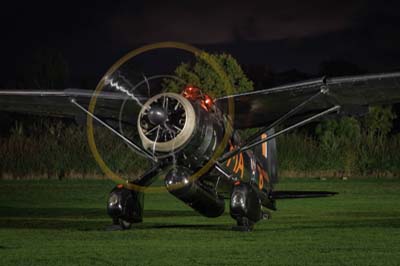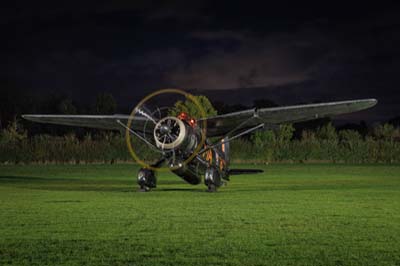The Shuttleworth Trust Collection - Night Shoot
Old Warden, Biggleswade
October 12, 2024
|
| The Shuttleworth Trust collection opened its doors this evening for a night shoot of selected aircraft. Two of which were placed outside the opened doors of one of its hangars. This particular display of two aircraft with two vintage motor cycles was not ideal and did not appeal to me, as it was not possible to isolate the aircraft from each other and the background and motor cycles. However the other three aircraft on offer were placed especially well on the open airfield and as the sun dropped below the horizon some very nice images were made possible. |
| De Havilland DH.88 Comet (G-ACSS '34') named Grosvenor House with Supermarine Spitfire V (AR501 'DU-E' registered G-AWII). |
| Left to right: De Havilland DH.88 Comet (G-ACSS '34'). |
| Desoutter Mk.I (G-AAPZ). It was constructed by National Flying Services (NFS) at Hanworth in 1931 from components supplied by Desoutter Aircraft of Croydon Aerodrome, Surrey. It made its first flight on August 18 1931. Powered by Cirrus Hermes engine, it was purchased by Richard Shuttleworth in January 1935. Only three of the 41 aircraft built survive today, the other two are VH-UEE and VH-UPR based in Tasmania and Australia, the latter is flyable as is G-AAPZ. |
| Sopwith Pup (9917 registered G-EBKY). Sopwith Dove (N9917 registered G-EBKY) converted to Pup standard it is in the markings of a Royal Naval Air Service (RNAS). The Pup followed the 1½ Strutter and preceded the Triplane in Sopwith history, entering service in 1916, first with the RNAS and later with the RFC. This example was acquired by Richard Shuttleworth in 1936. |
| Lysander Mk.3A (V9367 'MA-B' registered G-AZWT). The Lysander was designed to operate closely with the Army as a special transport and observation aircraft. It was a very rugged aircraft able to land on small and unprepared landing fields. Four squadrons with 170 Lysanders, were moved to France in 1939. At the end of their time in France only 50 aircraft returned. They were later used to patrol coastal areas for downed airmen and could deploy dinghies when necessary. The Lysander operated with the RAF from 1938 to 1946. |
